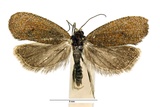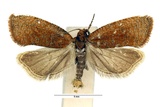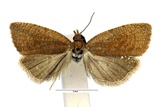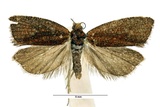Celypha rufana (Scopoli, 1763) Species
Last modified: Oct. 30, 2025, 8:05 p.m.
A fairly common species in Belgium, especially in the northern part.
Details
- Classification
- Family: Tortricidae > Subfamily: Olethreutinae > Tribus: Olethreutini > Genus: Celypha > Species: Celypha rufana
- Vernacular names
- Smallijnbladroller (NL), Lakes Marble (EN), Rotgewürfelter Wickler (DE)
- Synonyms
- Celypha rosetana (Hübner, 1799)
- First mention in Belgium
- De Fré Ch. 1858. Catalogue des Microlépidoptères de la Belgique. — Annales de la Société entomologique belge 2: 45–162. On page 71.
- Status
-
Native
Distribution
Imago
Wingspan 16–19 mm. The general coloration is olive-brown or ferruginous-brown, otherwise unmarked, but sometimes C. rufana markings show some coalescence resulting in short fasciae particularly from the dorsum. C. rufana does not change colour towards the head.
Bionomics
For the time being there is no clarity about the biology, but probably the young larvae feed at the roots and later they feed on fresh, withered and decaying leaves of a variety of plants.
the moths are flying during the afternoon and evening and later come to light.
Flight periods
The adults fly usually from mid-May towards late September, with a peak during June and August.
Observed on
- Host plant (species):
- Artemisia vulgaris and Tanacetum vulgare
- Host plant (genera):
- Lotus
The following plants are mentioned in literature: Tanacetum vulgare and Artemisia vulgaris, but this is uncertain as there is confusion with the food plants of Celypha rosaceana.
For the time being there is no clarity about the food plants of this species, but in captivity it has been successfully reared on Taraxacum officinale.
Habitat
It occurs in all kinds of habitats.





